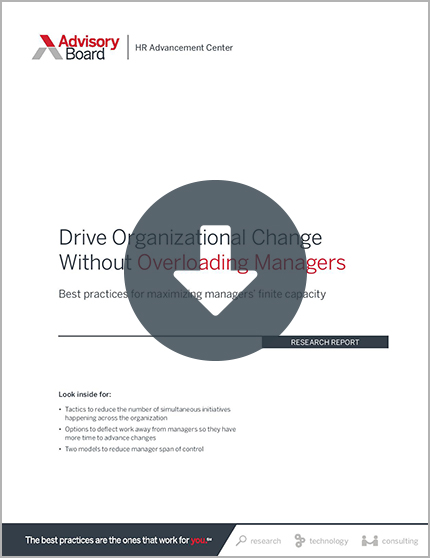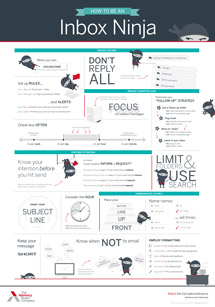Auto logout in seconds.
Continue LogoutEditor's note: This popular story from the Daily Briefing's archives was republished on April 13, 2020.
Psychology terms pop up in conversation all the time—often incorrectly, according to a group of experts who recently penned a paper to set the record straight. Toward that end, Scott Lilienfeld, a clinical psychologist and an author of the paper, in a recent episode of "Freakonomics Radio" clarified the meaning of five of the most commonly misused psychology terms.
How to write better, right now: Tips to help you communicate effectively
About the paper
Lilienfeld, a professor of psychology at Emory University, said the researchers wrote the paper in response to "confusion about psychiatric [and] psychological terminology both in the popular media, pop psychology, and … even in academic circles." The paper, published in Frontiers in Psychology, is titled "Fifty Psychological and Psychiatric Terms to Avoid: a List of Inaccurate, Misleading, Misused, Ambiguous, and Logically Confused Words and Phrases."
When it comes to psychology, Lilienfeld noted there's "a bit of a double-edged sword, because it is so intuitively interesting to all of us." He explained that "we all know—or at least think we know—something about love and memory, and friendships and dreams and things like that." The "downside though is that because something seems familiar it may sometimes seem understandable," he said.
The 5 psych terms you're using incorrectly
With that in mind, Lilienfeld in the episode shed light on five of the psychology terms people often misuse.
1. Bystander effect/bystander 'apathy'
The term "bystander effect" is used to explain the phenomenon that occurs when people "freeze and don't do anything" when they see an emergency unfold because other witnesses are present, Lilienfeld explained.
Misunderstandings about the concept are rooted in the public's understanding of a 1964 murder in New York City. According to a New York Times article published shortly after the event, about three dozen people witnessed and heard a man brutally attack and murder Catherine "Kitty" Genovese, but inaccurately suggested that no one intervened or called the police. The Times' coverage of the piece focused on the role "apathy" played in the situation, according to Bibb Latané, social psychologist and senior fellow at the Center for Human Science. As a result, many people began associating apathy with witnesses' inaction during Genovese's brutal attack. According to "Freaknomics," the phenomenon of bystanders not doing anything is sometimes mistakenly referred to as "bystander apathy."
While apathy reflects a lack of interest or concern, Latané said the bystander effect is not about indifference but rather whether a witness to an emergency is alone or with other people. Latané said people who witness emergencies in public spaces or when others are present are afraid to intervene for a number of reasons, including: fear about what could happen if they intervene, fear of embarrassing themselves, a sense that they have less responsibility because others are present, and a sense that the situation is not as serious as it might seem because the witnesses are all trying to keep calm themselves.
2. Hard-wired
According to Lilienfeld, the term "hard-wired" is misleading and "potentially pernicious," because it might lead people to assume some behaviors cannot be changed. For example, Lilienfeld said, "'The predisposition toward infidelity is hard-wired in the brain'—it must mean that as a male I can't resist my inclination toward infidelity. Hogwash, of course I can!" Lilienfeld explained, "There are very few—if any—psychological attributes that are strictly genetically determined, strictly hard-wired into the brain."
3. Statistically reliable
Another commonly misused term, according to Lilienfeld, is "statistically reliable," which he said people sometimes conflate with the term "statistically significant." When psychologists use the word statistically reliable, they mean consistent over time, he said, adding. "So we shouldn't confuse a result that is statistically significant with one that is likely to be reliable, consistent over time, or replicable. They're two very different things."
4. Personality type
The term "personality type" often comes up in pop psychology, Lilienfeld notes, but while humans "like to sort people into different types," he explains that academic literature has shown "most and probably all personality traits are continuously distributed much like height or weight," and are actually "dimensions."
Jerome Kagan, an emeritus professor of psychology at Harvard University who pioneered developmental and personality psychology, explained, "A dimension implies that people range along a certain trait, like how agreeable are you. A type implies a pattern of traits." Kagan added, "The biggest error is to assume that these personality traits—agreeableness, conscientiousness—are unitary—they only have one cause— and that they're inherited. They're not in your genes, and there's no basic set of personality traits."
5. Steep learning curve
Lilienfeld said people who start a new job often like to say it has a "steep learning curve," but what they mean is actually the opposite: "A steep learning curve is easy. Because a steep learning curve means not slowly." According to Lilienfeld, when we do encounter challenges with mastery, we should refer to it as "a very shallow learning curve."
Lilienfeld added, "When people say, 'This task has a steep learning curve,' what they mean is, 'Man, I feel like I'm going up like Sisyphus pushing the rock up the hill and going up a very steep mountain!' But in fact if something has a steep learning curve, that means that it's acquired very quickly" (Dubner, Freakonomics, 5/9).
How to write better, right now: Tips to help you communicate effectively
No matter your job, everyone needs to know how to write clearly and gracefully. Here are a few tips and tricks to help.
Don't miss out on the latest Advisory Board insights
Create your free account to access 1 resource, including the latest research and webinars.
Want access without creating an account?
You have 1 free members-only resource remaining this month.
1 free members-only resources remaining
1 free members-only resources remaining
You've reached your limit of free insights
Become a member to access all of Advisory Board's resources, events, and experts
Never miss out on the latest innovative health care content tailored to you.
Benefits include:
You've reached your limit of free insights
Become a member to access all of Advisory Board's resources, events, and experts
Never miss out on the latest innovative health care content tailored to you.
Benefits include:
This content is available through your Curated Research partnership with Advisory Board. Click on ‘view this resource’ to read the full piece
Email ask@advisory.com to learn more
Click on ‘Become a Member’ to learn about the benefits of a Full-Access partnership with Advisory Board
Never miss out on the latest innovative health care content tailored to you.
Benefits Include:
This is for members only. Learn more.
Click on ‘Become a Member’ to learn about the benefits of a Full-Access partnership with Advisory Board
Never miss out on the latest innovative health care content tailored to you.



